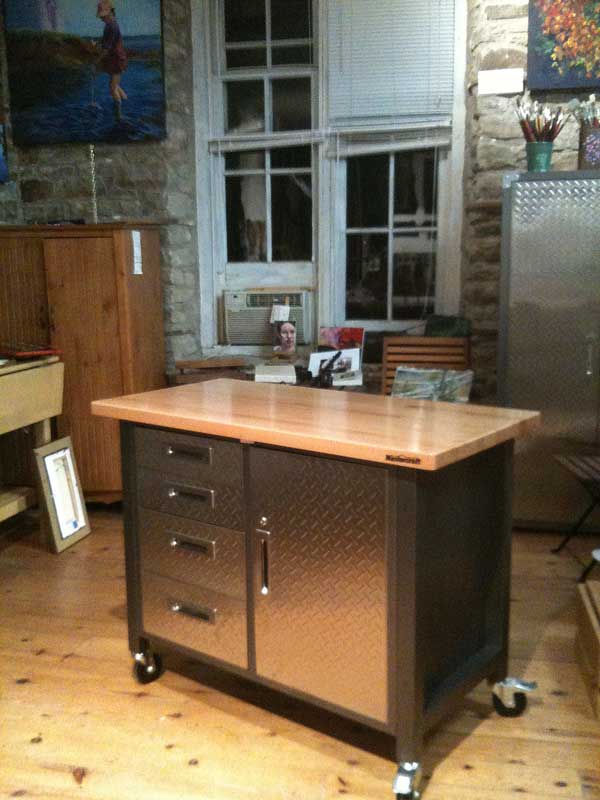 This may not have been on most people's wish list but it certainly was on mine! After purchasing the large cabinet of the same series for my new studio in August, this rolling cabinet has been high on this artist's wish list. This is the taboret that will hold my palettes as I paint. I chase the light in my studio and so a table on wheels is a must. Also, as the Williams Mill, where my studio is located, is open to the public Fridays and Saturdays, I always have a quick bit of cleanup for safety purposes each week. Furniture on wheels is a must!
This may not have been on most people's wish list but it certainly was on mine! After purchasing the large cabinet of the same series for my new studio in August, this rolling cabinet has been high on this artist's wish list. This is the taboret that will hold my palettes as I paint. I chase the light in my studio and so a table on wheels is a must. Also, as the Williams Mill, where my studio is located, is open to the public Fridays and Saturdays, I always have a quick bit of cleanup for safety purposes each week. Furniture on wheels is a must!
This item is the Mastercraft Base Metal Garage Cabinet Product #68-1224-2. It is pricey, but we , err, santa, was fortunate to get it on sale. It is built like a tank, and is a terrific height. One door locks. The drawers even come with a liner to keep items from moving. Warning, though. It took my elf helper about 4 hours to assemble. It assembles beautifully, but you need to set aside a lot of time, and clear a lot of space for its assembly. The wood table top is so nice (and shiny!) I am going to feel quite guilty getting that first bit of paint on it. I am considering having a piece of glass cut to fit the top and use the whole thing as a palette, Normally, I use up to four disposable paper pallettes at a time spread across the kitchen cart I have used until now.
Note: The cabinet I first purchased which inspired this one is the Mastercraft Metal Garage Tall Cabinet Product #68-1221-8. It holds a huge amount of goods and the construction is impressive. The bottom shelf holds over 400 lb. if you have a particularly heavy piece of equipment. Both items are very heavy and we used a dolly to take them from the car to the studio. The box this cabinet came in had a very small dent. We took the chance the contents were not damaged as it was the only one in stock. Unfortunately, I was wrong. The last piece in the box was slightly dented - something we decided we would live with as the box was so heavy, and we had already done so much work. Lesson: always take the box with no dent!


